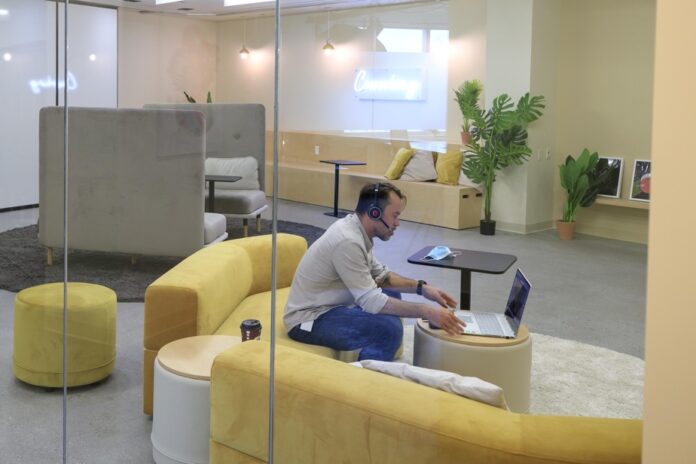This is already the fourth year that Télétravail Québec, a non-profit organization, has organized Telework Week, from October 23 to 26. “Real estate, transportation, hyperconnectivity and even the right to telework for people experiencing health or family challenges are all important subjects that are already making headlines, but no tangible solution seems to be put forward. before by our different levels of government,” explains José Lemay-Leclerc, president of Télétravail Québec. For this fourth 100% virtual version, the organization wants to discuss new possibilities that teleworking brings, both for workers and employers. Numerous conferences are on the program, including one on cybersecurity – the issue of the day – and on the use of coworking spaces. Moreover, on its site, Télétravail Québec offers its Nomade project, a directory of varied places allowing you to telework safely and promote local businesses: parks, coworking spaces, lodges, etc. To change the place of pain and get out of routine.
No woman escapes it and it costs the Canadian economy 3.5 billion. What are we talking about ? From menopause. The Canadian Menopause Foundation (MCF) has just released a brand new report. Beyond the real personal suffering experienced by many leaders, managers and employees, this stage of life costs employers $237 million in lost productivity. It is calculated that around 540,000 working days are lost due to managing menopausal symptoms. Currently, more than two million women aged 45 to 55 are employed in Canada.
If you are a restaurant or hotel manager, you have been through your share of upheavals over the past five years. However, the challenges of 2019 did not disappear by magic. There is a labor shortage and inflation is ruining your customers. The MURTECH Summit, held annually in Las Vegas, is offering a Canadian version of its smart restaurant technology conferences on December 4-5 in Toronto. How can technology drive growth in hospitality? You will be offered tools that unlock new revenue, such as fresh produce vending machines, subscription models, food lockers. We will also tell you how to use geolocation to attract customers, encourage them to make purchases and increase their loyalty. The Summit is organized in particular by Hospitality Technology, an American platform dedicated to the role of information technology in improving business performance for hotel and restaurant operators.
Attracting and retaining talent are your biggest challenges, Gallagher’s 2023 Organizational Well-Being Report reveals. This is also what influences the 504 Canadian organizations consulted this year by the global society to set salaries. Because according to 60% of respondents, compensation is one of the main factors that impact employee turnover. Many Canadian employers, 40%, reported a higher turnover rate than expected in 2022 and 69% say they have improved their base salaries to meet their retention and recruiting goals, while 29% say they have increased their variable remuneration and bonuses. Others, 47%, changed their benefits plan between the start of 2022 and the start of 2023, 74% focusing on emotional well-being while 76% focused on flexible working to attract employees. talent – a sharp increase from 52% in 2021.
The gap is not huge, but worth noting. Women earn an average of $76,087.72 while their male counterparts have an average annual salary of $75,741.35. It is the consulting firm BNP Performance philanthropique which carried out this study on remuneration and well-being in the philanthropic sector in Quebec. The average general salary currently stands at $76,113.28; However, senior management positions average $83,318.65. Moreover, if your organization was created less than three years ago, you are likely to have a better salary than if you had been with those active for 10 or 20 years. Other positions are less well paid: the average salary for a counselor is $66,862 and for those in administrative roles, $44,173. On the other hand, the provision of social benefits has progressed: more than 60% of organizations now offer group insurance plans and 93% cover training-related expenses.















